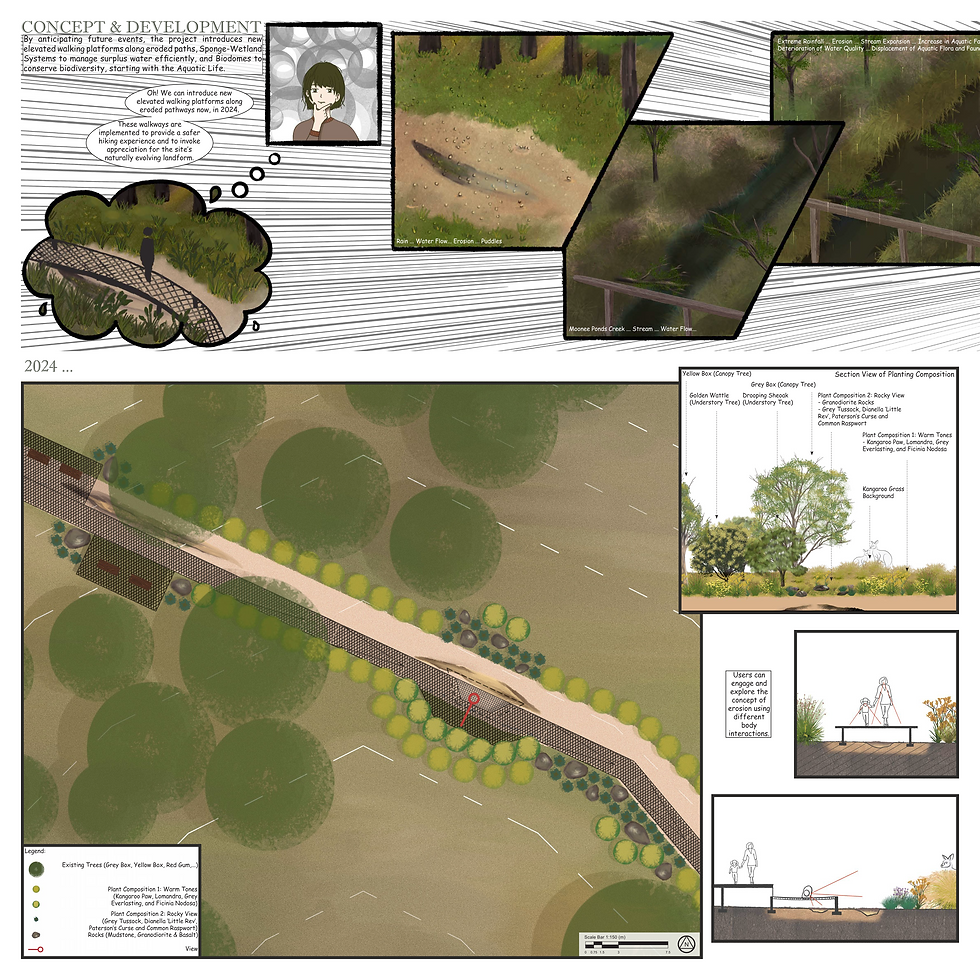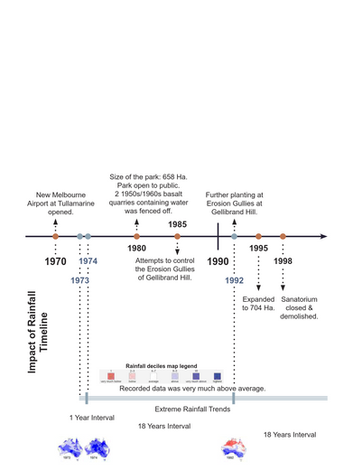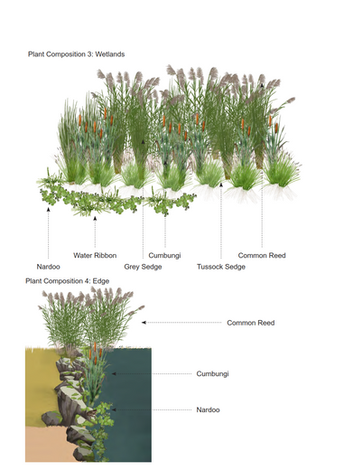Adaptive Frageality
Adapting to a Fragmented + Reality = Adaptive Frageality
In a future where extreme rainfall becomes more frequent, Woodlands Historic Park will face challenges that affect its environmental, cultural, and social aspects. Adaptive Frageality is a scenario that encourages adaptation to this new reality shaped by climate change.
Summary of Timeline
Based on the site analysis, soil erosion is present in the landforms of Woodlands Historic Park. Due to Climate Change, extreme rainfall would occur in this following trend of every eighteen years to every five or six years and eventually more frequently, which would lead to more soil erosion areas, forming puddles during rainy weather, in time leading to the expansion of new and current streams and creeks, and ultimately displacing the site’s biodiversity. The three catalyst events will occur in the present time, 2032, and 2044. In the State Government's Greater Melbourne climate research concluded that under a drastic data scenario, Melbourne's climate will
be similar to Adelaide.
1. New elevated walking platforms along eroded paths.
2. Sponge-Wetland Systems to manage surplus water efficiently.
3. Biodomes to conserve Aquatic Life.
Plant Composition
When choosing plant species for my design, I went with a selection of native species that is suitable for this environment. These plant species are low maintenance and robust plants, good for a self-reliant ecosystem. Thus, I have created four plant compositions that based on warm toned plant species, dry rock edges, wetland habitat and wet rock edges. Each composition has a variety of plants with a mix of diverse foliage with seasonal bloomings.
The arrangements of these plant compositions can be found in my section drawings.
Creating a Storyline
For my Comic Book Presentation Style, I wanted to incorporate two main characters, Lira (F) and Finn (M), to portray how I felt when I visited the site and the conversation I had with my groupmates.


Immediate Future: 2024
New Elevated Walkways along Eroded Paths
These walkways are implemented to provide a safer hiking experience and to invoke appreciation for the site’s naturally evolving landform. Users would be able to engage and explore the concept of erosion using different body interactions.
Near Future: 2032
Sponge-Wetland Systems
to manage surplus water efficiently.
Sponge-Wetland will be introduced at Moonee Ponds Creek near the picnic area to manage surplus water. Some areas here will be naturally expanded due to soil erosion and this area, where the constructed wetlands are, will be excavated. This is a self-supporting system where water is managed, excess water collected, and this will be reused and recycled by dispersion in the hot and dry seasons.


Far Future: 2044
Biodomes to conserve Aquatic Life.
A Biodome, with an estimated construction period of 4-6 years, will be introduced. This design aims to help conserve the aquatic ecosystem that will be displaced due to the extreme rainfall, soil erosion and disturbance to the current habitat. The Biodome will manage and maintain a climate suitable for this ecosystem. The water collected from the wetlands will also be used as vapours to cool the inside of the dome during the dry season.
Final Boards - Comic Strip
This subject was interesting and the assigned site had lots to offer and experiment with. Through this subject, I learnt more landscape-based designs in comparison to the other studio projects in Unimelb, Bachelor of Design Course.
I was able to explore designing for a dystopian future, building a timeline for future events, explore and design for climate change and adaptation, and create a comic book style presentation board. Most of the rendered were digitally hand sketched making it feel more comic-like. 90% of this comic strip was sketched by hand on procreate, it was tiring but fun and rewarding.















